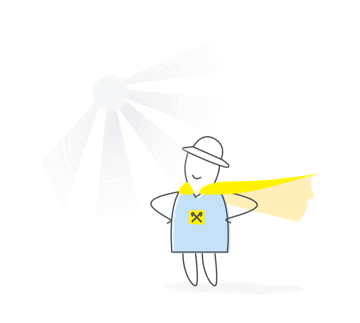Barter with an entrepreneur: features of accounting
Sometimes during the implementation of economic activity there is a need to pay not with money, but with goods or services. That is, pay off barter. The needs for such operations are especially relevant in times of crisis, and since they happen quite regularly, it is worth recalling the peculiarities of accounting for such calculations.
The definition of barter (exchange) operations is given in the Tax Code of Ukraine (GCC). This is a business transaction, which provides for settlements for goods (work, services) in non-monetary form under one contract. According to the barter agreement, each of the parties is both a seller and a buyer - it sells one product, and accepts the other as payment for it.
Only a general systematic FLP can participate in a barter operation, since the moneymakers are forbidden to make non-monetary payments. Unified persons are obliged to make settlements for shipped goods (work performed, services rendered) only in cash or non-cash (paragraph 291.6 of article 291 of the TCU). If another form of payment is used, the entrepreneur will need to abandon his tax system and pay a single tax on the barter amount at a rate of 15%.
The object of taxation for a general systematic is net taxable income, that is, the difference between total income (revenue in cash and non-monetary form) and documented expenses. Non-monetary revenue, in particular, includes income from barter transactions. Income arises on the date of receipt of money (or payment in kind). The cash method is used to recognize income. So if the date of formation of income is the date of actual receipt of compensation for goods shipped, then at the time of shipment of the goods, the entrepreneur does not have income.
Costs must meet a number of requirements, namely, be:
– directly related to the economic activity of the FLP;
– documented;
– actually incurred;
– in the list of expenses defined in paragraph 177.4 of Art. 177 GCC.
In addition, the system-wide can display the costs only after:
– payment of such expenses;
– income (funds or compensation in kind) from the buyer.
Therefore, in order to recognize expenses, both events must take place.
If the FLP shipped the goods, but the client did not pay it, it cannot reflect the value of the shipped goods as part of the income. If on the contrary, the goods were first received as payment, and then the delivery to the buyer occurred, then on the date of receipt of the goods from the buyer, the FLP can include its value in income. And on the same date, he has the right to form expenses.
During the offset (we recommend offsetting in writing), the cost of the goods received will be included in the income as payment for the goods delivered earlier by FLP. If, by agreement of the parties, in the event of offsetting, a surcharge is also expected, its amount is also reflected in income. Then the expenses for this operation will be reflected.
Let's look at an example of how to display a barter operation in the Book of accounting for income and expenses (hereinafter - the EFA Book). Suppose that the FLP shipped goods worth 5000 UAH in September to the client. The client paid with other goods in the amount of 5000 UAH in October. The cost price of the shipped goods is 4000 UAH. Barter operations, as well as operations involving a cash settlement, are documented and reflected in the EFA Book. But taking into account the general specifics of accounting for income and expenses in the general taxation system. With income it is clear: it is reflected on a cash basis. In the case of barter - at the time of receipt of the goods. In our example, in October.
Despite the fact that the FLP shipped the goods in September, the general principle of recognition of expenses works here - they can be reflected only after their actual payment, that is, after receiving compensation in kind and in cash from the buyer. In our example, also in October.
Therefore, the entrepreneur on the date of receipt of goods from the client as part of a barter transaction:
– in column 2 of the Book, EFA will record income in the amount of the cost of this product 5000 UAH;
– in column 5 of the EFA Book indicates the details of the document confirming the expenses incurred directly related to the receipt of income and actually paid, and in column 6 - this amount of expenses. In other words, the cost of the shipped goods at the purchase price (4000).
Documents confirming the expenses can be: a payment order, a cash receipt, receipt, fiscal cash register receipt, an act of procurement (work performed, services rendered) and other primary documents proving the fact of payment for goods (work, services).
To summarize the above. In a barter transaction, income arises in kind upon receipt of the goods as payment. Expenses arise only after payment for the goods (receipt of goods or services). The date of shipment of the goods does not affect the date the income occurred.
Natalia Shcherbak, consultant for the newspaper "Private Entrepreneur"















